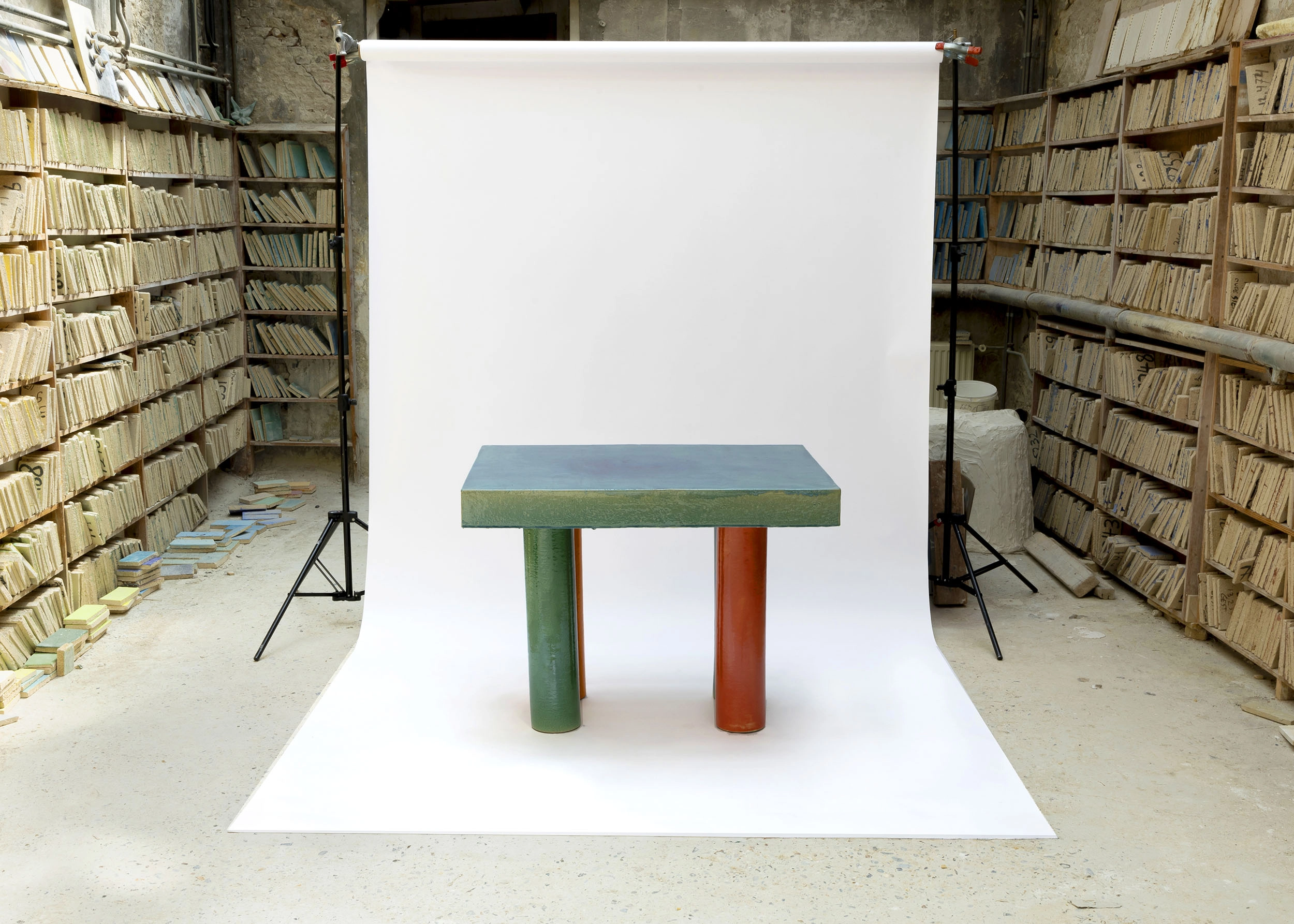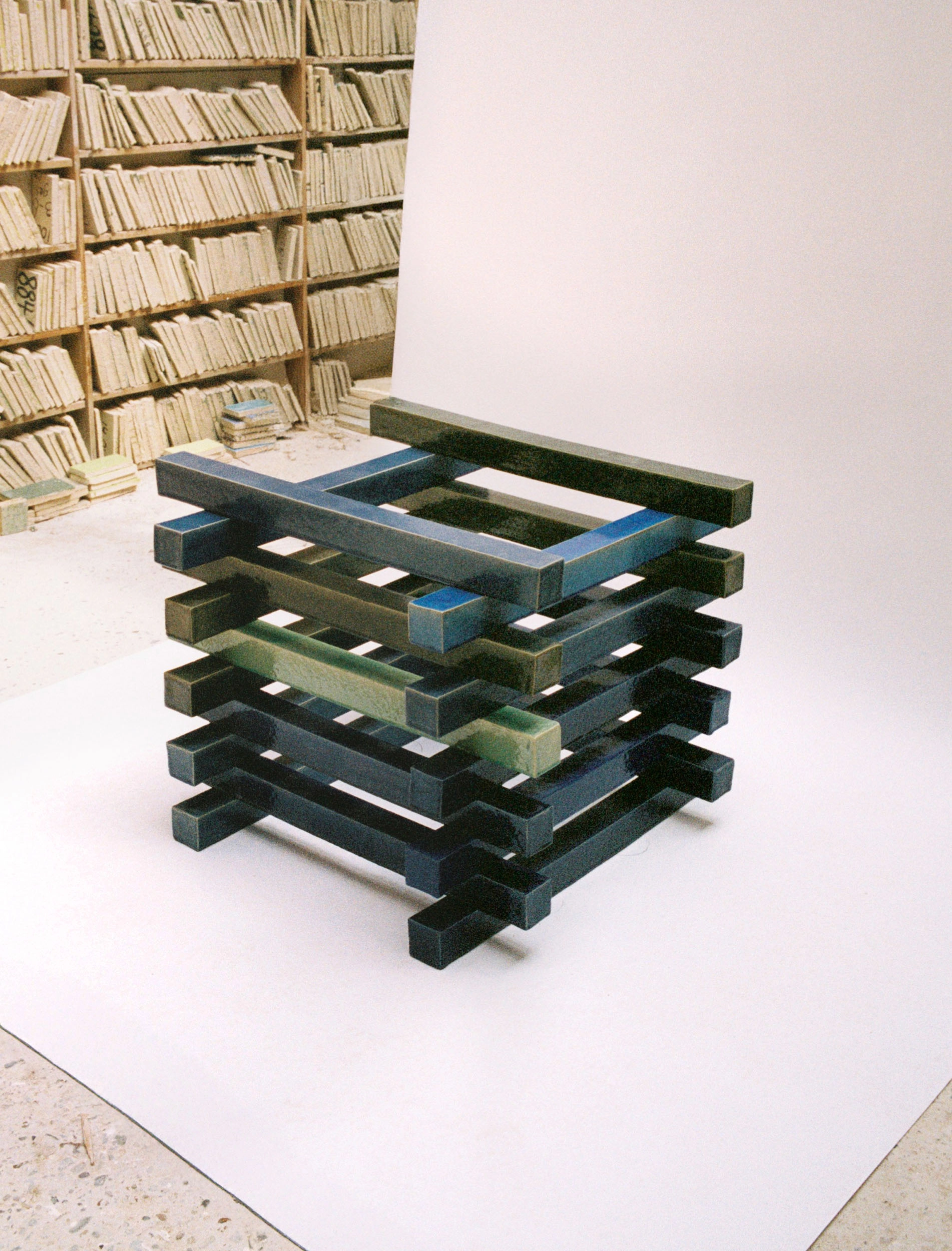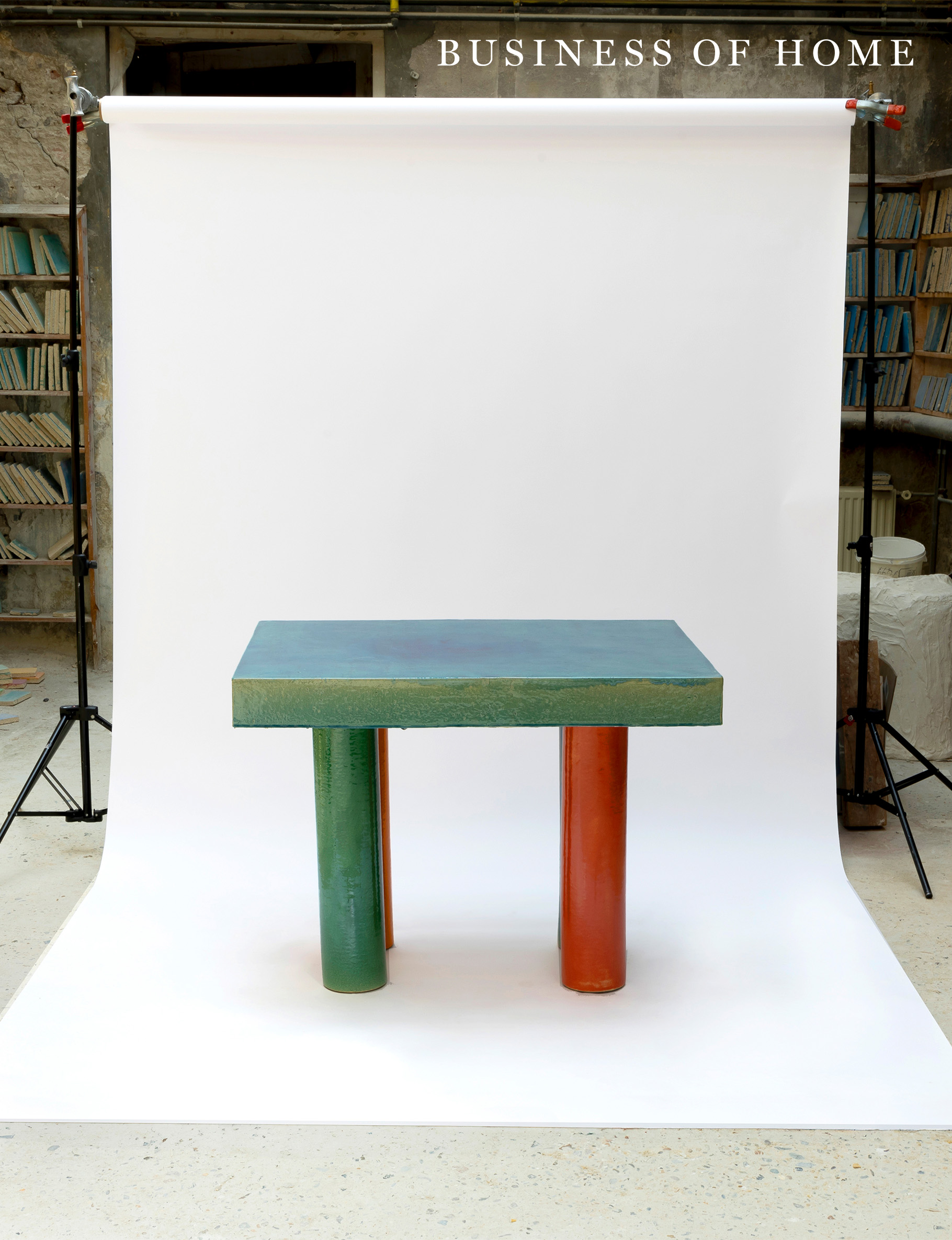BUSINESS OF HOME
USA
There are no molds for this artist’s sculptural new collection
Words Aydan Taylor
Photo Luna Paiva & Clara Cullen
Visit Business of Home

Luna Paiva grew up surrounded by art. “My father was an artist, so I’ve been playing and working with clay since I was a child sitting beside him painting and drawing,” she tells Business of Home. “Materials are part of my childhood. So it’s been a long process that started very early.” Born to Argentinian and French parents, Paiva spent her youth between Paris and Buenos Aires. She studied art history and archaeology at the Sorbonne before working in film and TV set design, and then pivoting to full-time sculpture design, photography and drawing. Eventually she was invited to design a window installation for Hermès in Spain and Argentina, and has since had works featured in the Buenos Aires Museum of Modern Art and galleries across the globe

Each of Paiva’s sculptures begins with a drawing. “I have many years of notebooks and ideas. Instead of writing, I draw. I start accumulating images and ideas and shapes, and then, for some reason, some shapes start to have some meaning to me,” she says. Unlike many sculptors, she typically doesn’t begin with a small-scale prototype, preferring to start with the final size. “It can go from a drawing to bronze, or I can fire the ceramic and then glaze it,” she explains, adding that now and then the process changes. “I can take different directions. But I never know from the beginning where it is going to lead me. Sometimes I start with small-scale sculptures, and then they become a playground in Morocco.” True story. In 2024, she was tasked with designing a playground for an orphanage in Morocco called Amizmiz, and she took designs she originally had planned for lighting and redid them at a larger scale to create interactive play pieces. “I looked around me and my studio, and suddenly I saw those shapes, and they were the perfect shapes for a playground,” she recalls. “One week before, I was trying to make them in glass on a desk scale to make these lamps. They never became lamps [and instead] became sculptures that were climbable, jumpable and playable.”

This year, Paiva debuted her most function-forward works with New York gallery StudioTwentySeven—a collection of limited-edition chairs and tables crafted in bronze or glazed ceramic. The monolithic furnishings, which are inspired by brutalist design, serve as both practical pieces and artistic forms. “Each piece takes four to six months to do,” she says. “They are completely unique. They don’t have a mold. It’s all made by hand. They’re all different.” Also on display is a series of her large-scale colored-pencil drawings—gradient works she crafted during the pandemic. The exhibition, titled “The Seed” and curated by Nacho Polo and Robert Onuska, is on display until November 10
Looking ahead, Paiva is collaborating with Apartamento magazine co-founder Omar Sosa on a book about her life’s work. In the meantime, she’s going to continue to focus on smaller-scale projects and her photography. “I always try to do my best and have a good balance between my family and my work, and to teach my kids how to draw and play with clay, the same way I did,” she says
